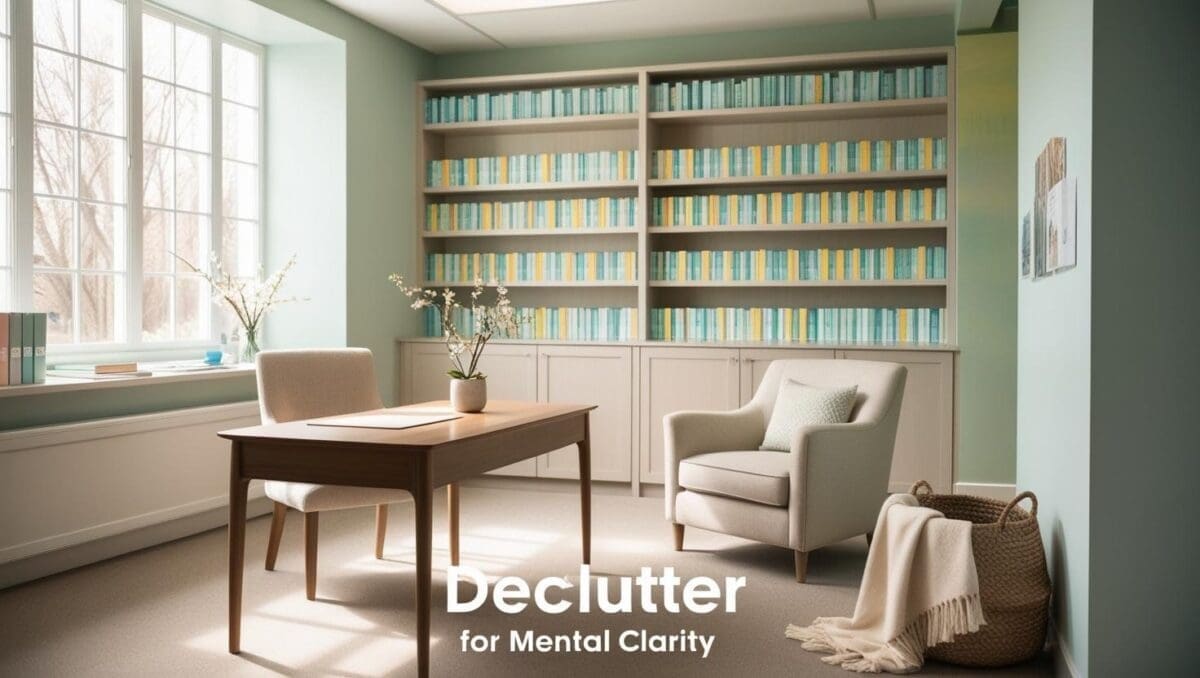**Affiliate Disclosure** This article contains affiliate links, which means that if you click on one of the product links and make a purchase, I may earn a small commission at no additional cost to you. These commissions help support the creation of free, helpful content like this article. I only recommend products and services that I believe are relevant, useful, and aligned with the topic of creating a comfortable and inviting counseling office. Thank you for supporting this site!
As a counselor, your office is more than just a workspace—it’s a sanctuary where your clients come to feel safe, understood, and supported. The way your office is decorated plays a significant role in creating this atmosphere. A bohemian (boho) style, with its warm, eclectic, and natural vibe, is an excellent choice for a counseling office. It promotes relaxation and connection while offering endless opportunities for personalization.
In this post, we’ll explore the key elements of boho decor and provide actionable steps to transform your counseling office into a boho-inspired haven.
Why Choose Boho Style for Your Counseling Office?
There’s something truly grounding about walking into a space that feels warm, soulful, and just a little bit magical—and that’s exactly what boho therapy office decor can offer. Unlike more clinical or overly curated design styles, boho embraces imperfection, texture, and personality. It invites you to create a space that feels human, not sterile—a safe haven where vulnerability and healing can unfold.
For counselors, the design of your office isn’t just about aesthetics—it’s part of the therapeutic process. Boho style, with its roots in nature, creativity, and comfort, helps foster emotional regulation, relational connection, and sensory engagement. It’s a beautiful fit for practitioners who want their space to be both nurturing and expressive.
The Therapeutic Power of Boho Elements
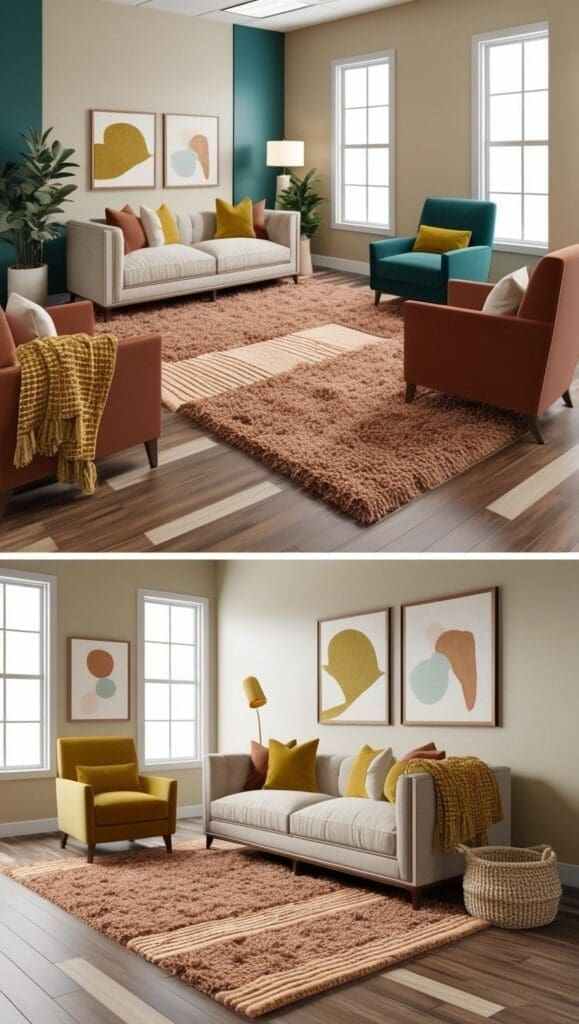
Let’s explore how the key design components of boho decor can enhance the therapeutic experience:
1. Natural Materials with Emotional Resonance
Boho design thrives on materials like reclaimed wood, rattan, bamboo, cotton, and macramé. These elements create a grounding energy in the space—something that can be especially comforting for clients dealing with anxiety or sensory sensitivity. A wooden coffee table or a macramé wall hanging can evoke a sense of warmth and calm without overstimulation.
2. Layered Textures to Support Regulation
Layering is more than a visual tool—it’s a sensory one. Soft cushions, textured throws, and woven rugs don’t just look inviting; they offer tactile regulation. For clients who benefit from grounding experiences, layered textures can provide subtle sensory input that helps soothe the nervous system.
3. Earthy Colors with Therapeutic Intent
Colors like terracotta, sage green, rust, ochre, and sand tones help connect us with nature and foster emotional safety. These hues have been shown to reduce overstimulation and enhance mood, creating an environment where clients can process emotions more freely. Adding bold accents in teal, deep blue, or mustard can stimulate creativity and curiosity—great for expressive therapies.
4. Eclectic Patterns that Tell a Story
Boho’s signature mix of tribal prints, vintage florals, and geometric shapes can help create a layered narrative in your space. These patterns can act as visual metaphors or conversation starters. Just be sure to balance busier designs with calm elements, so the space doesn’t become overwhelming.
5. Greenery that Breathes Life
Plants don’t just look pretty—they actively purify the air, reduce stress, and improve mood. Adding a mix of real and faux plants in terracotta or woven planters adds movement and organic beauty. For a low-maintenance option, try snake plants or pothos.
Want Help Finding Boho Therapy Decor You’ll Love? Explore some of my favorite affordable and calming pieces in this curated guide: 10 Inspiration Ideas for Modern Therapy Office Decor
Action Steps to Transform Your Office
1. Start with a Neutral Base
A soothing foundation is essential when creating a boho-inspired counseling office. Soft neutrals like cream, warm beige, or light greige (gray-beige) offer a calm visual backdrop that supports therapeutic work and lets your textured boho accents shine.
Neutral tones don’t mean boring—they create visual space and reduce overstimulation, which is especially important for anxious or emotionally sensitive clients. Plus, they provide flexibility for layering in the earth tones and bold patterns that make boho decor so charming.
How to Apply It:
✔ Repaint the Walls: If your space allows, go with calming shades like Swiss Coffee by Behr or Classic Gray by Benjamin Moore.
✔ Removable Wallpaper: Not able to paint? Try peel-and-stick wallpaper in boho prints like subtle tribal, linen textures, or Moroccan tiles in faded tones.
✔ Furniture Foundation: Stick to neutral upholstery for larger pieces—white, tan, or oatmeal couches and armchairs create the perfect blank canvas.
Therapist Tip: A neutral base reduces visual noise and helps clients feel more grounded—a subtle but powerful way to support nervous system regulation in your therapy sessions.
🪴 Looking to upgrade your furniture base? Explore my guide on Minimalist Therapy Office Ideas for affordable and elegant foundation pieces that blend beautifully with boho style.
2. Add Natural and Textural Elements to Create Warmth
Boho therapy spaces thrive on sensory depth—textures and organic materials make your office feel grounded, human, and safe. Natural materials like rattan, jute, wood, and woven cotton subtly connect clients to the earth and reduce the sterile, clinical feel that many offices carry.
Layering textures isn’t just for aesthetics—it engages the tactile senses, which can support self-regulation and bring comfort to both clients and therapists. Think of it as visual and physical softness that calms the nervous system.
How to Apply It:
✔ Bring in Woven Materials: Add a rattan bookshelf, bamboo window shade, or a wicker basket for storing therapy supplies. These pieces are functional and beautiful.
✔ Layer Cozy Textures: Add a jute or shag area rug for softness underfoot, then build on it with embroidered pillows, chunky knit throws, or handwoven poufs.
✔ Incorporate Wall Texture: A macramé wall hanging or hand-carved wooden art piece can create a focal point with texture and soul.
Therapist Insight: Clients often notice the “feel” of a room before any words are spoken. Natural textures give off a quiet message: you are safe, you are held, you can exhale here.
🧺 Want more storage and style tips? Check out Smart & Cheap Storage Solutions for Therapy Offices for ideas that blend beautifully into a boho aesthetic.
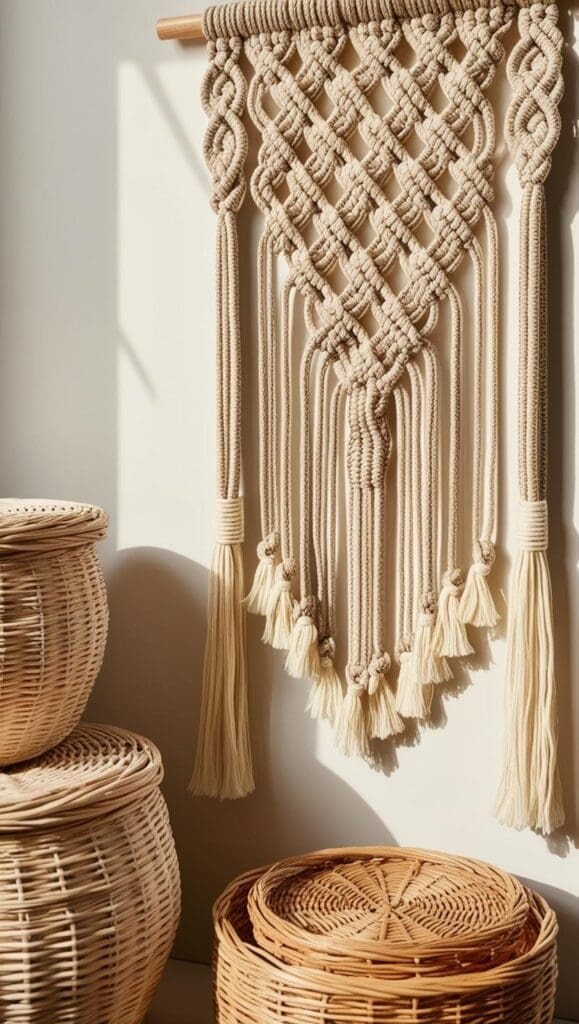
3. Incorporate Greenery for Healing and Balance
No boho counseling space is complete without a touch of nature. Plants aren’t just decor—they’re living, breathing elements that can enhance emotional well-being. Studies show that indoor greenery reduces stress, boosts mood, and even improves concentration—making them ideal companions in a therapy room.
In boho design, greenery adds softness, color, and flow. Whether you prefer a lush corner plant or a petite succulent on your desk, plants help your space feel alive, grounded, and inviting.
How to Apply It:
✔ Choose Low-Maintenance Options: Snake plants, pothos, and peace lilies are perfect for offices with low light and limited time for plant care.
✔ Use Boho-Style Planters: Opt for woven baskets, clay pots, or hanging macramé planters to align with the earthy, eclectic feel.
✔ Add Plants with Purpose: A lavender plant can provide a subtle calming scent, while aloe vera adds visual interest and a wellness vibe.
Therapist Tip: You can even invite clients to choose a small plant to “symbolize growth” during goal-setting sessions. This adds a layer of meaning to your decor and therapeutic work.
🌿 Need help styling plants in small spaces? Don’t miss this article: Spring Decor Ideas for Therapists: Refresh Your Office for a Calming, Uplifting Space
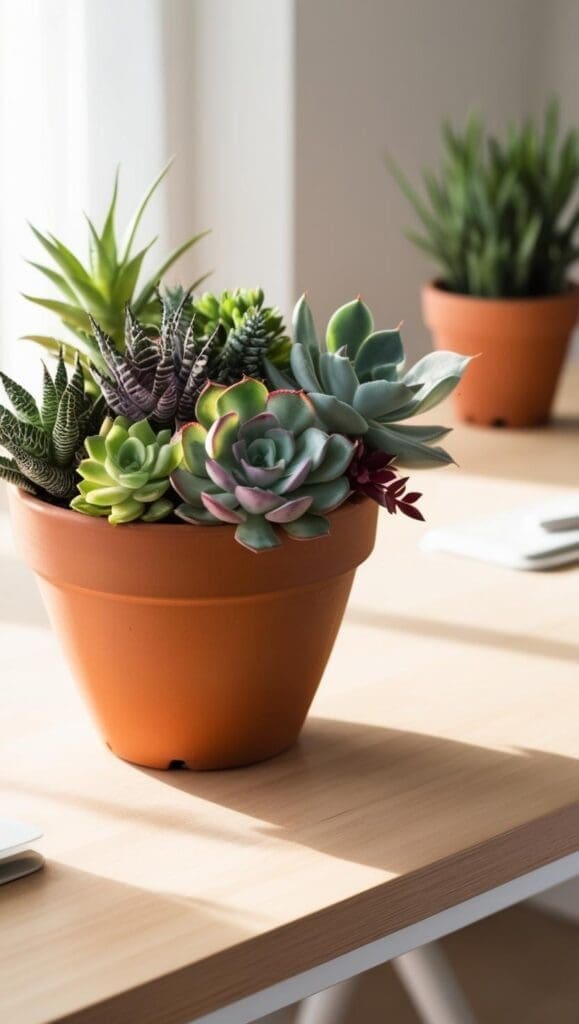
4. Light It Right: Creating a Soft and Inviting Glow
Lighting does more than brighten a room—it defines its emotional tone. In a counseling space, you want lighting that soothes the nervous system, fosters trust, and makes your office feel safe and comforting. That’s why the boho aesthetic embraces soft, layered lighting instead of cold, overhead fluorescents.
Think: warm, ambient glow that says “you’re safe here.”
Boho-Inspired Lighting Tips for Therapists:
✔ Swap Overhead for Floor Lamps: Choose rattan, bamboo, or wood-accented floor lamps with fabric shades to cast a gentle light across the room.
✔ Use String Lights or Lanterns: Add subtle charm by draping string lights around a bookshelf or curtain rod. Battery-powered lanterns also add a whimsical yet grounded touch.
✔ Incorporate Rechargeable Lamps: For added flexibility (and no messy cords!), use cordless or rechargeable lamps to create soft lighting zones—ideal if your office has limited outlets.
🧠 Therapeutic Insight: Warm-toned lighting helps regulate circadian rhythms, which can lower anxiety and support emotional regulation during sessions (Vandewalle et al., 2007).
💡 Looking for cordless lighting ideas? Read this:
No Wiring? No Problem! How to Incorporate Cordless & Rechargeable Lamps in Your Therapy Office
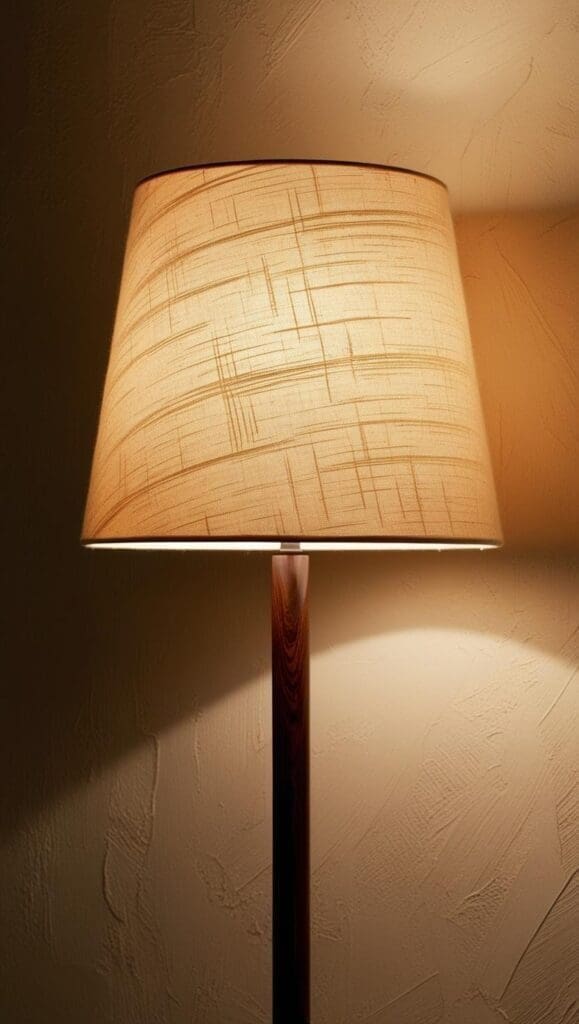
5. Personalize with Wall Art and Meaningful Accessories
Your therapy office should feel like a peaceful extension of who you are—not just a neutral backdrop. Personal touches not only reflect your personality but also help create emotional resonance for clients. In boho-inspired design, wall art and accessories are an intentional way to infuse soul into the space.
What to Include in Your Boho Therapy Office:
✔ Tapestries & Textile Art: Hang a woven or macramé tapestry behind your seating area to create a warm, grounding focal point.
✔ Abstract or Nature-Inspired Prints: Choose calming pieces—like desert landscapes, minimalist florals, or watercolor waves—that encourage reflection and emotional openness.
✔ Soulful Objects: A small shelf of favorite therapy books, a handmade pottery vase, or even a scented candle in a clay jar can quietly tell a story.
✔ Cultural Accents: Incorporate globally-inspired elements like Moroccan poufs, Indian block prints, or Latin American woven baskets—just be mindful of respectful sourcing and cultural sensitivity.
🧠 Therapeutic Insight: Art in therapy spaces can evoke feelings of safety, introspection, and emotional attunement—especially when it’s non-threatening and abstract (Kapitan, 2010).
🎨 Want to explore how art choices shape therapy environments? Read this next:
How Artwork in Therapy Offices Impacts Clients Emotionally
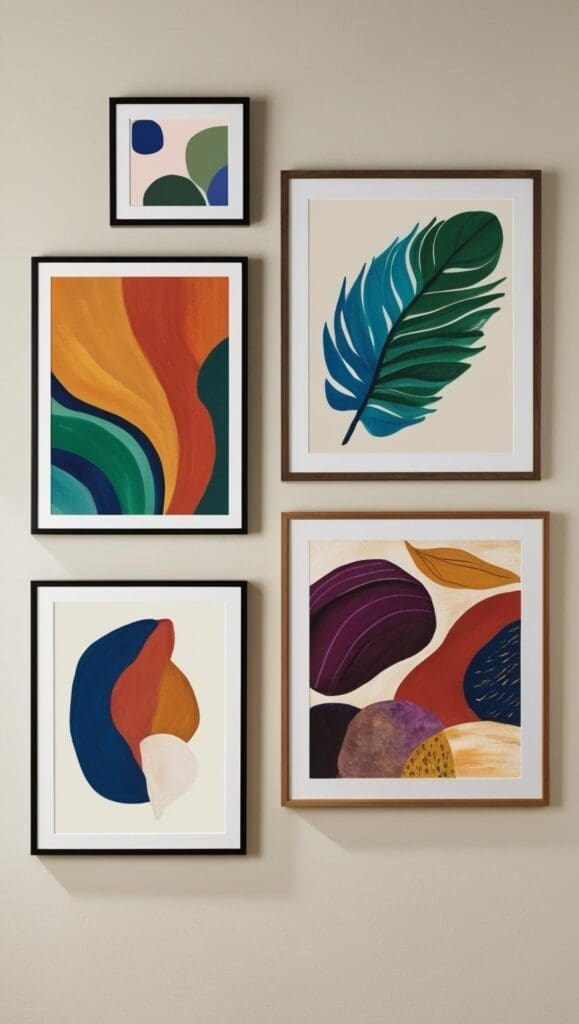
6. Create a Cozy Relaxation Corner for Emotional Reset
One of the most therapeutic additions to a counseling space is a dedicated relaxation nook. It doesn’t have to be large—a small, thoughtfully arranged corner can offer clients a chance to settle in, breathe deeper, and feel safe. Especially in a boho-style office, this area can exude calm and nurture connection.
Why It Matters:
Clients often need a few quiet moments before or after a session to reflect, decompress, or simply pause. A relaxation corner can become that gentle pause in their day—welcoming, unrushed, and centered.
How to Create It:
✔ Choose Grounding Seating: A floor cushion, pouf, or soft armchair in a neutral or earthy tone invites rest.
✔ Layer Comforts: Add a woven basket with soft throw blankets, textured pillows, or even a weighted lap pad for grounding support.
✔ Include a Small Table: Place a small rattan or wood table with a candle, calming plant, or a journal with prompts to encourage mindfulness.
✔ Use Soft Lighting: A nearby floor lamp or a rechargeable table lantern can create a cocoon-like ambiance, especially in the late afternoon.
🧘 Therapeutic Tip: A space that offers sensory comfort (touch, smell, warmth) can help regulate the nervous system—especially helpful for clients experiencing anxiety or emotional overwhelm (Ogden & Fisher, 2015).
🌿 Want ideas for furnishing these cozy spots? Check out:
The Best Accent Armchairs for Therapy Offices
7. Keep It Functional
While aesthetics are important, don’t overcrowd your office. A clutter-free space is vital for maintaining a sense of calm. Choose multifunctional furniture like storage ottomans or baskets to keep essentials hidden yet accessible.
Action Step: Declutter your office and store items in stylish woven baskets to maintain a clean look.
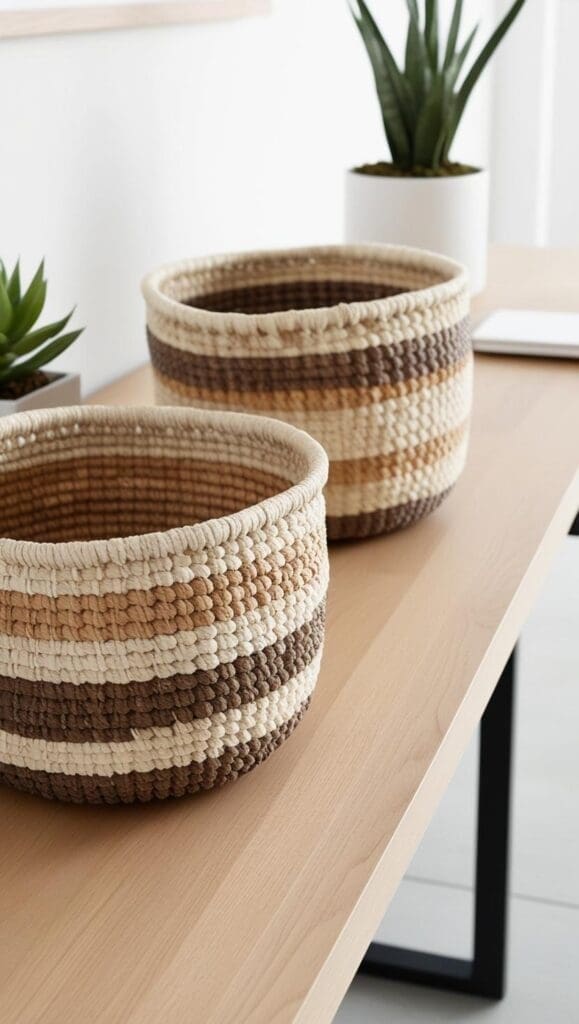
Budget-Friendly Tips for Boho Decor
- Thrift Stores: Find vintage furniture and unique accessories at a fraction of the cost.
- DIY Projects: Create your own macramé wall hangings or paint simple patterns on plain cushions.
- Online Marketplaces: Look for affordable boho-style decor on platforms like Etsy, eBay, or Facebook Marketplace.
The Impact of a Boho-Inspired Office
A well-designed office can significantly enhance the therapeutic environment for your clients. The earthy tones, soft textures, and natural elements of boho decor create a space where clients feel safe and comfortable, fostering deeper connection and relaxation during sessions.
Final Thoughts
Transforming your counseling office into a boho sanctuary doesn’t have to be complicated or expensive. By incorporating natural materials, warm lighting, and thoughtful accessories, you can create a space that reflects your personality while prioritizing your clients’ comfort.
Start small, experiment with different elements, and soon, your office will become a calming haven for everyone who walks through your door.
Would love to see how you bring these ideas to life—share your boho office transformation journey in the comments!
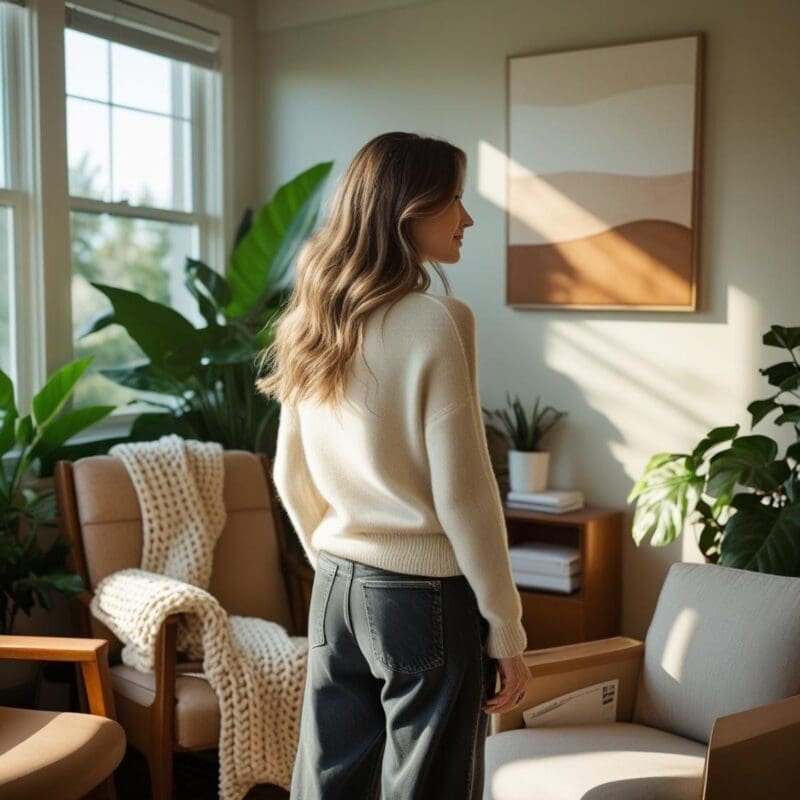
About the Author
Hi, I’m Eve, a former school counselor with a master’s degree in School Psychology and a passionate advocate for children and families navigating sensory challenges. As a mom of children with sensory sensitivities, I deeply understand the journey special-needs parents face, and I dedicate myself to researching and sharing practical solutions to help children thrive and feel comfortable in their bodies. My goal is also to empower counselors, therapists, and psychologists with creative strategies and supportive resources to enrich their everyday practice. When I’m not writing or exploring new therapeutic approaches, you’ll find me spending quality time with my family and continually seeking inspiration from everyday moments.

